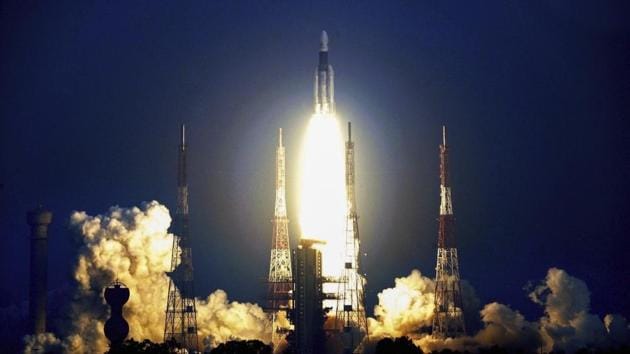Isro’s GSAT 29 satellite will provide faster connectivity
The Indian Space Research Organisation early on Thursday morning carried out the first of three orbit-raising exercises on GSAT 29, the communication satellite launched on Wednesday.
The Indian Space Research Organisation (Isro) early on Thursday morning carried out the first of three orbit-raising exercises on GSAT 29, the communication satellite launched on Wednesday.

The communication satellite was launched in a geosynchronous transfer orbit at 5.24 pm on Wednesday. The geosynchronous transfer orbit is an elliptical orbit around the earth, from where another two manoeuvres will move the satellite into a final circular geostationary orbit from where its communication transponders will provide fast connectivity to inaccessible areas in Jammu and Kashmir and North-eastern India.
The two manoeuvres to position the satellite into the final orbit are scheduled for November 16 and 17.
A liquid apogee motor was fired for 4,875 seconds on Thursday morning to move the satellite from the apogee of 35,897 km to 35,745 km, and perigee from 189 km to 7,642 km. Apogee is the point in the orbit when the satellite is farthest away from the Earth, and perigee is the point closest from the Earth. Today’s manoeuvre also changed the inclination from 21.46 degrees to 8.9 degrees.
The satellite was launched from Satish Dhawan Space Centre at Sriharikota aboard indigenously developed GSLV Mark III, which has the capability to carry heavy payloads up to 4 tonnes to a geosynchronous transfer orbit.
In April, Isro had lost communication with GSAT 6A, another in the series of India’s communication satellites, during these manoeuvres. Although Isro was later able to trace the satellite, communication has not been re-established.






